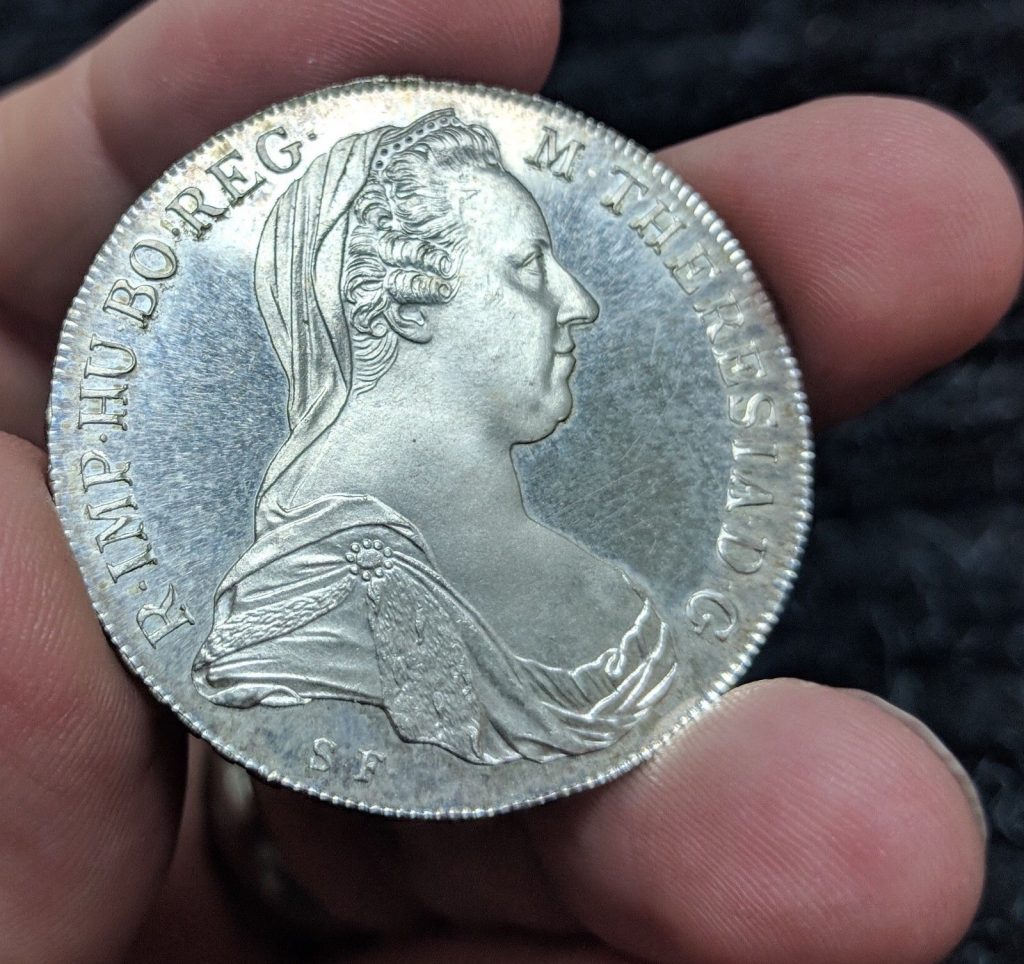The Maria Theresa Thaler (MTT) is a silver bullion coin that has maintained its role in world trade since its initial minting in 1741. It derives its name from Empress Maria Theresa, who reigned over Austria, Hungary, and Bohemia from 1740 to 1780 and is depicted on the coin.
Initially, in 1741, the coin adhered to the Reichsthaler standard, with 9 thalers equaling the Vienna mark, which represented roughly half a pound of fine silver. However, in 1750, the thaler was debased to 10 thalers per Vienna mark. The subsequent year saw the widespread adoption of this new standard across German-speaking regions when it was formally accepted during the Bavarian monetary convention. Due to the timing of this convention, some writers mistakenly claim that the Maria Theresa Thaler was first minted in 1751.
Since the passing of Maria Theresa in 1780, the coin has consistently carried the date 1780. On September 19, 1857, Emperor Francis Joseph of Austria declared the Maria Theresa thaler as an official trade coinage. However, just over a year later, on October 31, 1858, it ceased to function as legal tender in Austria.
The MTT was widely circulated in various parts of the world. It had a significant presence in the Arab world, particularly in Saudi Arabia, Yemen, and Muscat and Oman. It also found usage in Africa, notably in Ethiopia, as well as in India. During World War II, when Indonesia was occupied by Japan, the MTT gained popularity over the currency issued by the occupying forces. In response, the American Office of Strategic Services produced counterfeit MTTs for use by resistance groups.
In German-speaking countries, a spelling reform was implemented in 1901, which altered the written form of “Thaler” to “Taler” (although the spelling of given names like “Theresia” remained unchanged). Consequently, 20th-century references to this coin in German and Austrian sources can be found under the term “Maria-Theresien-Taler.” The spelling in English-speaking countries remained unaffected. The Austrian Mint continues to produce the MTT, offering it in both proof and uncirculated conditions.
1780 Austria The Maria Theresa Thaler Coin * Restrike * 83% Silver 28.1 grams
